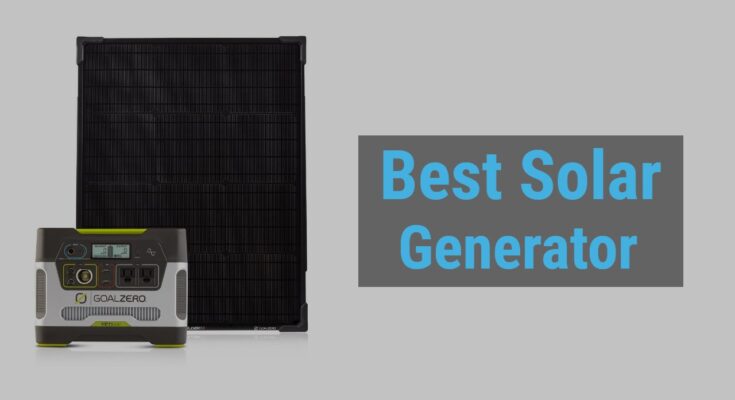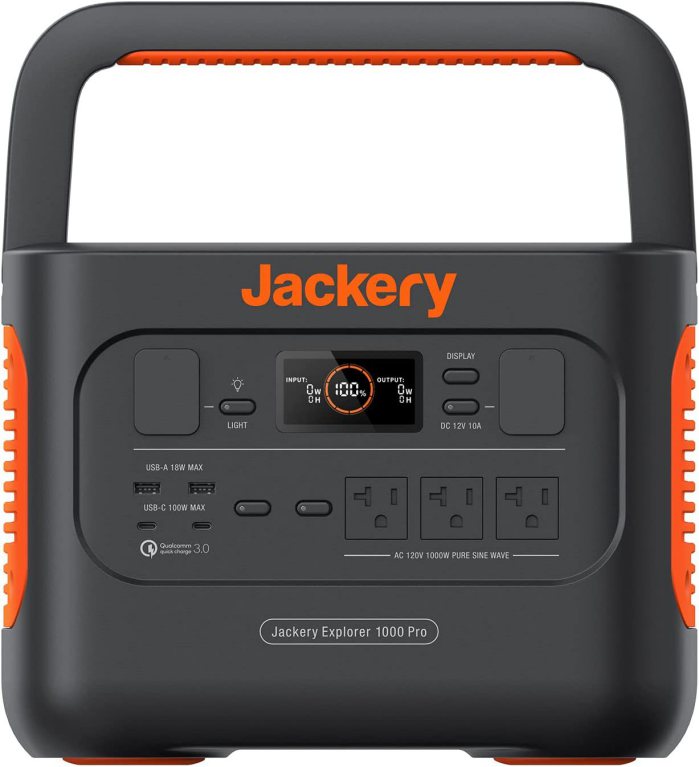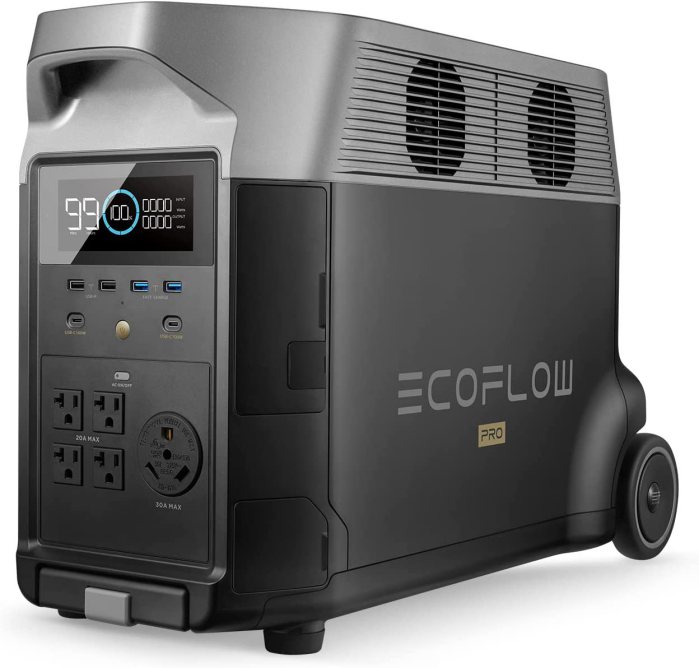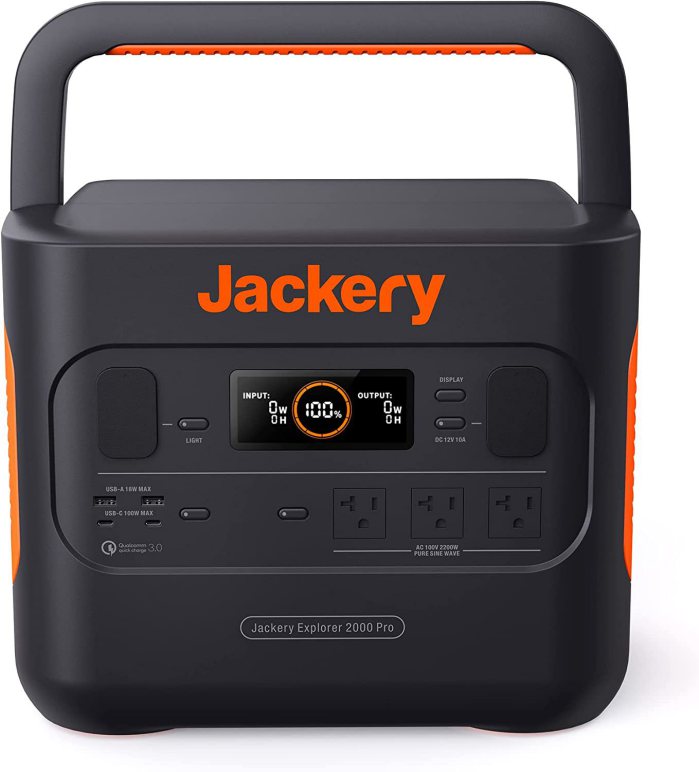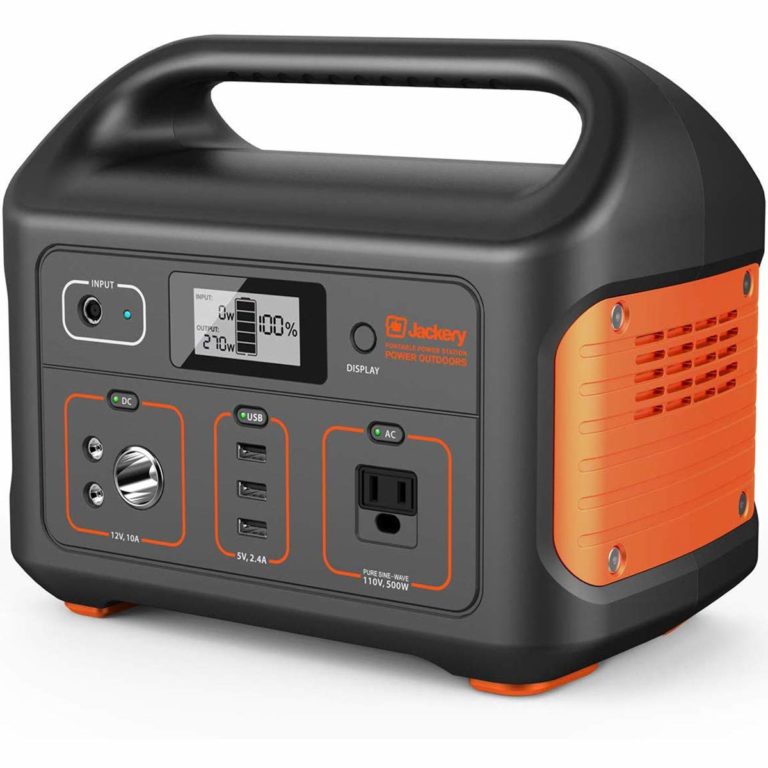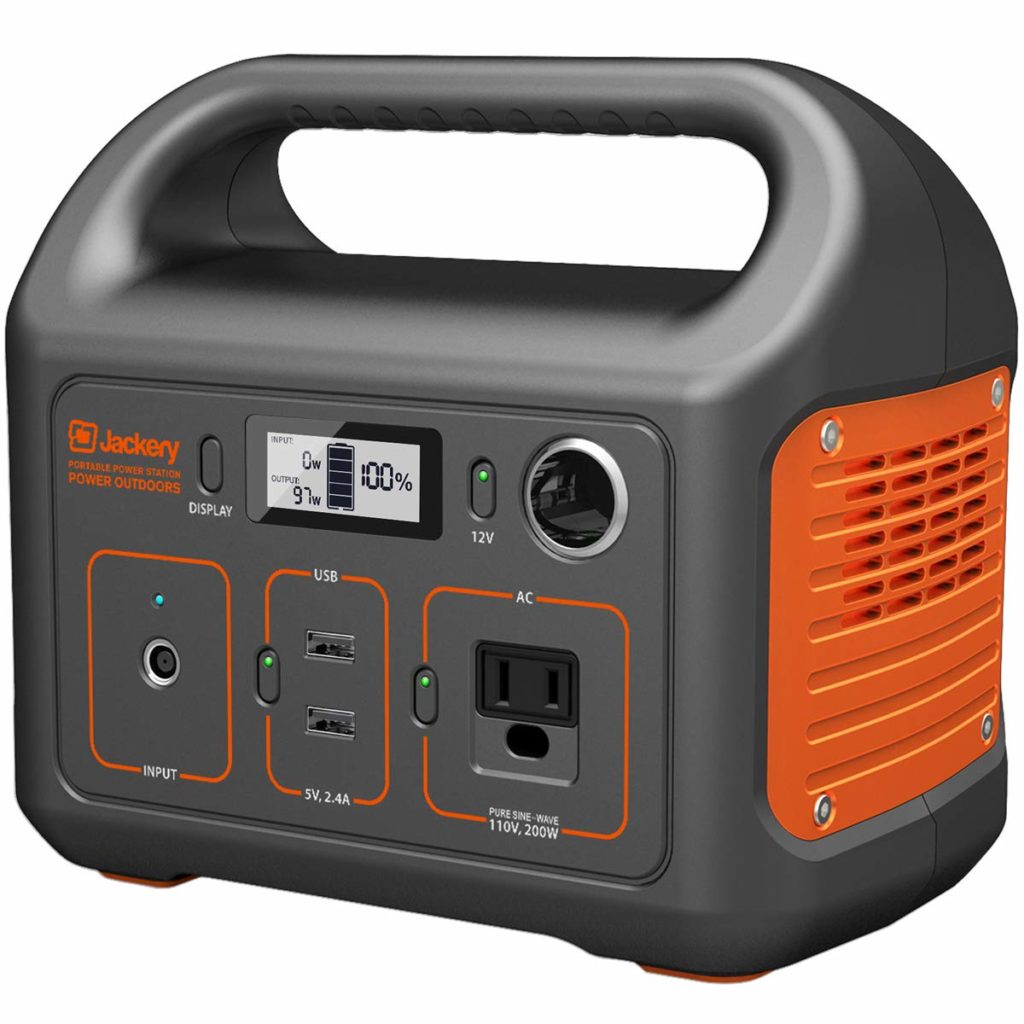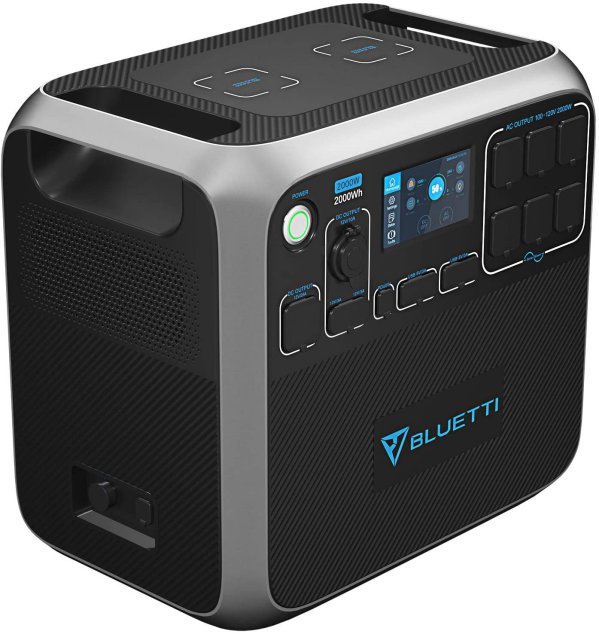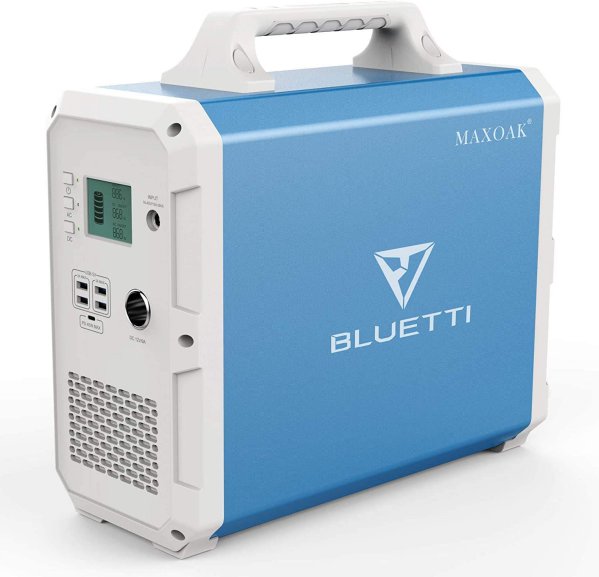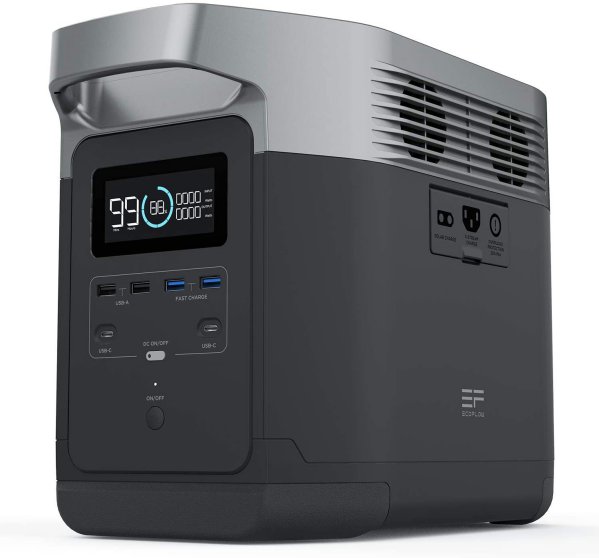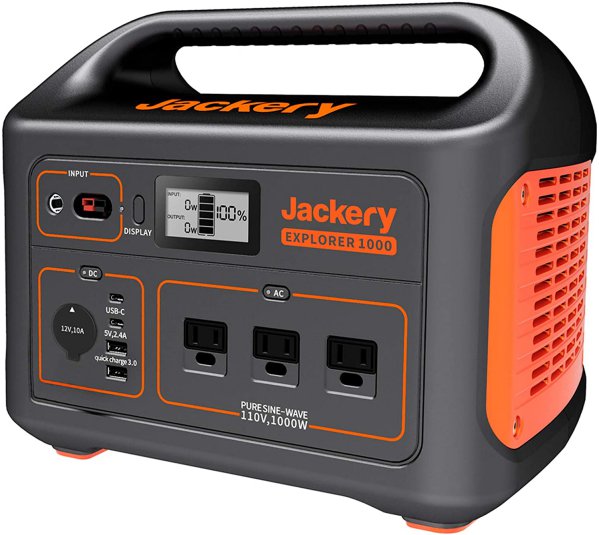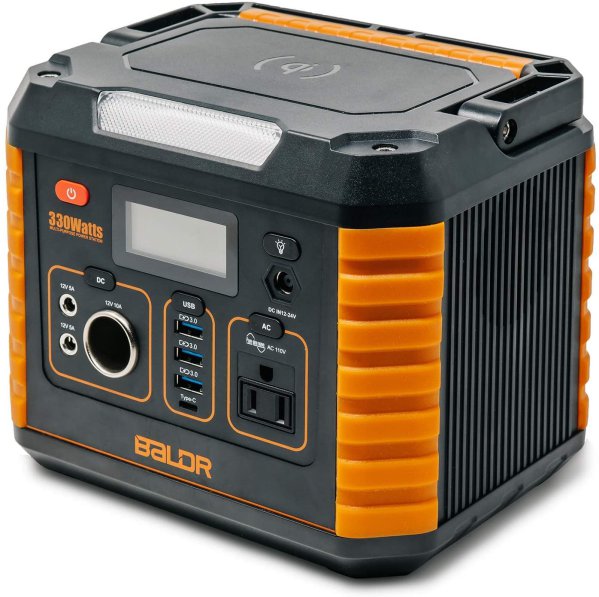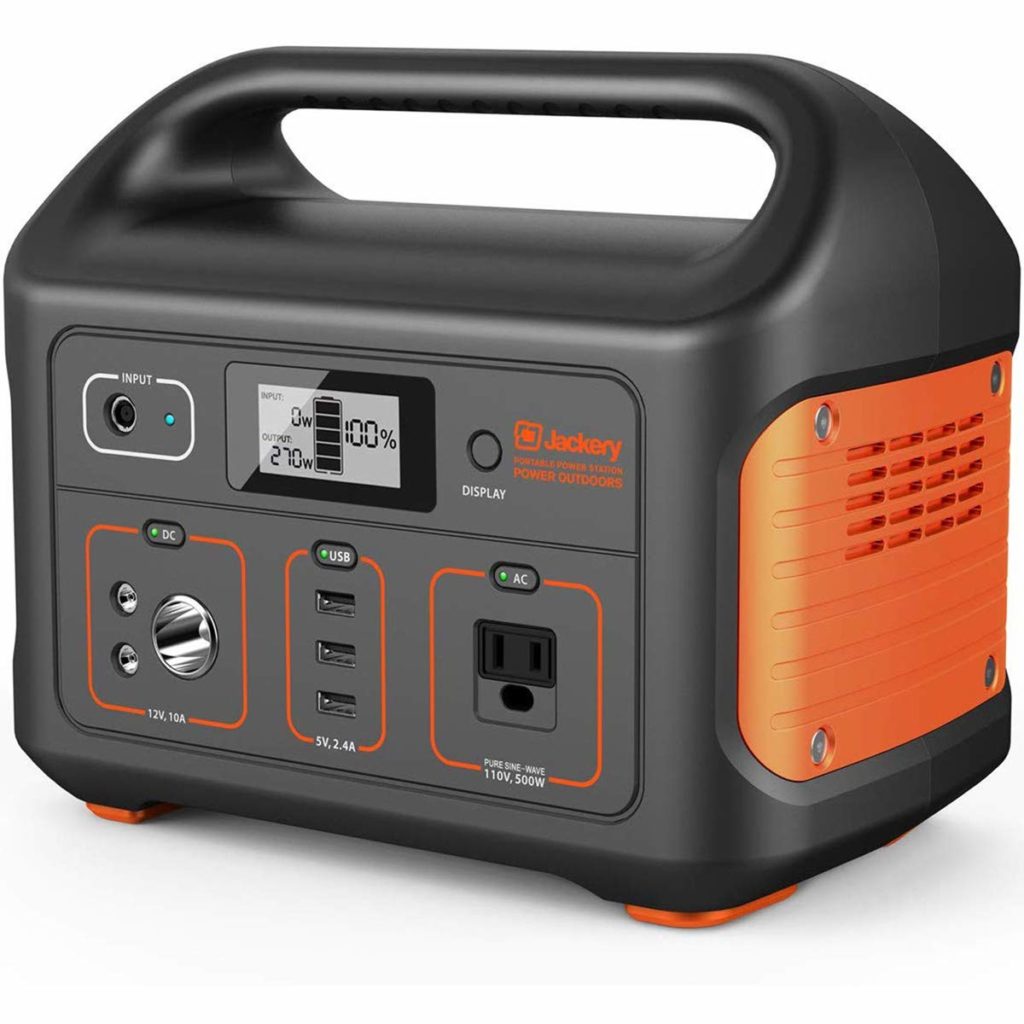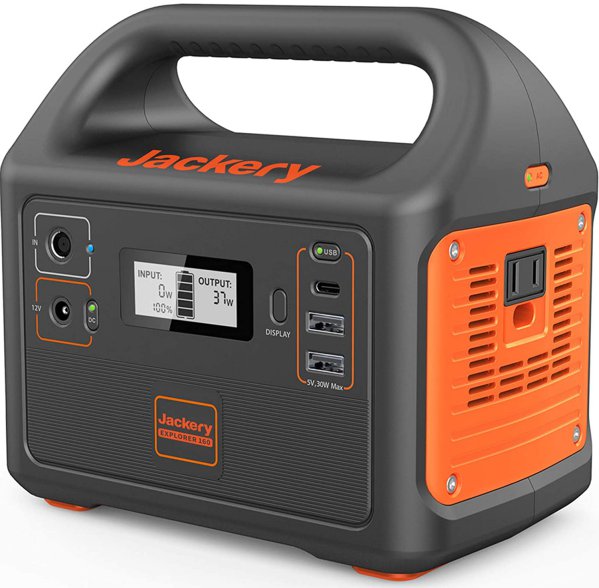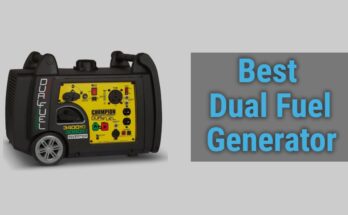In this modern world, access to green and renewable energy like solar energy is rapidly gaining popularity, the reason being its reliability and cleanliness compared to other conventional sources.
Solar generators have the huge potential to replace energy-generating sources like gas, propane, and diesel-powered generators in years ahead because they are environment friendly, and there is no operating cost associated with them.
You can charge the solar generators either from a wall outlet or from a solar panel, which is why this generator is a great choice for camping, boondocking, or any outdoor trip.
So, if you want to take benefit from harvesting solar energy, and if you are looking for the best solar generator, then this is the right place. We are sure our comparison chart of different solar generators will surely help you find the right product for you.
Table of Contents
Quick Comparison: Ultimate Solar Generator Battle
| Jackery 1000 Pro (Best Overall)

|
| EcoFlow DELTA Pro (Highest Running/Surge Power + Highest Storage Capacity - Most High-end)

|
| Jackery 2000 Pro (Another Great High-Storage Capacity Generator)

|
| Jackery Explorer 500 (Budget Pick)

|
| Jackery Explorer 240

|
| MAXOAK BLUETTI AC200P

|
| MAXOAK BLUETTI EB240

|
| ECOFLOW EFDELTA

|
| MAXOAK BLUETTI EB150

|
Best Solar Generators 2024
1. Jackery Explorer 1000 Solar Generator
Jackery is known for providing green power solutions for outdoor use, which are specially designed for outdoor enthusiasts. Believe me, this is the perfect power station to power your next tailgating adventure.
Jackery Explorer 1000 has the biggest battery. Still, it is extremely portable and weighs exactly 22 lbs, which is quite less compared to the other product in the same range, but you won’t like to carry it around for longer periods.
The battery capacity of this solar generator is 1000 Wh, from which you can access the power through multiple ports on the front panel. It has three AC outlets, 2 USB-C ports, one 12V/10 A carport, and One standard USB-A port, and it also has a USB-A 3.0 for quick charging needs.
Apart from that, the unit comes with a strong and robust built quality, and it is built to last. Besides, all the outlets we have discussed are nicely arranged inside an orange circle and properly named to avoid any confusion.
This unit can be charged in any of the 3 ways mentioned; you can use the solar panels to recharge it, or directly connect it to the AC wall outlet, and if that’s not possible, then you can use a car power outlet to charge it. When charging it from sunlight, you can connect either one or two solar panels to the unit.
This is a great product, and it is worth every penny, starting from its compact and lightweight design to its solar charging and battery technology it offers value for money.
Plus, with the 2 years of the manufacturer’s warranty, you won’t have to worry about any mishappenings.
Read Full Review of Jackery Explorer 1000 Solar Generator

Pros
- Fans don’t make any noise.
- Lightweight.
- Enough ports.
- Lightweight design.
- Can power up a portable refrigerator.

Cons
- Slow charging.
- The fan has a random running fashion.
- USB-PD maxes out at 18 W.
2. MAXOAK BLUETTI EB240 2400Wh Portable Power Station
MAXOAK made a name for itself because they offer feature-packed products at an affordable price point. As soon as they launched this Bluetti EB340, it was an instant hit in the market, and people really loved it! Reason being its massive battery bank and reasonable price.
Going forward, batteries are protected inside the aluminum alloy shell, which also has vents for cooling purposes. When the power is drawn out or taken in, the built-in fans start rotating, keeping the device’s temperature under safe limits.
This whole assembly weighs 48.5 pounds, and to easily carry it around, the generator has a large handle on the top.
The most impressive thing about this portable solar generator is its battery capacity, which is 2400 Wh, and it consists of LG’s latest Li-ion battery cells that will provide about 2500 life cycles.
The most noteworthy feature would be its ability to single out the socket, which is drawing excessive power, so you won’t have to unplug all of your cords.
Aside from that, the featured display shows error codes instead of generic lights, and the meaning of the error codes are given in the instruction manual.
Moreover, the unit comes with all the necessary power outlets, including two 120 Volt ac outlets, one USB-C outlet, four USB-A outlets, and a 9 Amp socket.
Furthermore, to get fully charged from the wall outlet, the unit will take almost 15 hours. But when charged through solar panels, which is subjected to direct sunlight and can generate recommended input for the unit, it takes 5 to 6 hours for the full capacity to be restored, and it is really impressive.
Also, it is backed by one year of limited warranty from the manufacturer.

Pros
- Large battery capacity.
- Fast solar charging.
- Many outlets.
- Displays the exact socket from where the unit is overloaded.

Cons
- Weight can be a little heavy for some people.
- Low output capacity.
3. BLUETTI AC200P 2000Wh Portable Solar Generator
BLUETTI has really caught the attention of consumers looking for reliable backup power, and the Bluetti AC200 may turn out to be the destination for some people on their quest to find the best solar generator. So let’s see what it has to offer.
At first sight, you will discover that the unit has the most stylish design and the most durable built, and it becomes kind of splash-resistant when all the outlets are enclosed with their rubber coverings.
The unit features a bright display at the front, which shows vital information like power input and output. It also presents real-time data like current, voltage, power, and charging status.
In addition to that, you can also control the output voltage, frequency, and charging mode independently.
Other than that, the product offers an insane amount of energy-storing capacity which is 2000 Wh. With that much power at your disposal, you can run almost any appliance in your house.
With this portable power station, you won’t ever be short on power outlets because it offers tons of them. The unit comes with 6 AC wall outlets, one PD 60 W USB-C, two 12V 3A ports, one DC 12V 10A port, now 12V 25A RV port, and four USB-A ports.
What’s more, the generator can be charged with 5 different methods. You can charge it from the AC and DC sources, which are mostly used compared to any other charging method.
Now consider this, it is possible to charge the unit from 0% to full in well under 3 hours. It can happen if the input is 700W at 150V, which is a maximum limit. This is possible if you connect seven 100-watt solar panels in series.
Also, keep in mind that the manufacturer offers 2 years of limited warranty for this portable power station.

Pros
- Tons of power outlets.
- Massive battery capacity.
- 2000 W high-powered inverter.
- Smart technology.

Cons
- Expensive
4. EF ECOFLOW EFDELTA 1260Wh Portable Power Station
The EFDELTA from the ECOFLOW is a midrange power station with a power storing capacity of 1260 Wh and a 1800W inverter. The battery offers an impressive lifespan, and you will be able to charge it to full capacity as long as for 800 cycles; after that, the battery capacity falls to 60%.
This portable power station has a robust built and durable construction because of the aluminum chassis, which encloses all the necessary electronics. With all the things inside the unit, it weighs just 31 lbs.
Apart from that, this EFDELTA power station has an eye-pleasing design. If we talk about the power outlets, then on the back, the unit has 6 AC outlets, and 3 ground sockets, one between each pair of outlets and it also has a 12 DC carport there.
While on the front panel, the unit has two USB-C outlets to charge the latest electronics, two fast-charging, and two standard USB-A outlets.
On top of that, the product features a big display that shows the input and output watts, battery percentage, and overload message if there is an overload. It also shows how much time you have until the battery dies and the time keeps changing as the output power changes.
Moreover, the EFDELTA comes with the XT60 charging port to connect the solar panels, and it is possible with the cable which comes with the unit.
If the solar panels continuously supply 400 watts, then it takes only 4 hours for the charge level to reach 100% from 0%.
You can charge the generator from the wall outlet or the car outlet and the AC connector as well. Along with all this, the solar generator is backed by 4 years of the manufacturer’s warranty.
Full Review of Ecoflow Delta 1300 Solar Generator

Pros
- Fast charging.
- Plenty of power outlets.
- It is lightweight and compact.
- very good battery life.
- Two fast-charging USB-A ports

Cons
- Generates noise on full load.
5. BALDR 330 Portable Solar-Powered Generator
This solar-powered generator is the best option to keep your electronics like mobile, laptops, and tablets charged up. It is lightweight, compact, and extremely portable to carry to the campsite or picnic and power the small speakers or the colorful lights.
This portable solar generator has a power storing capacity of 297Wh, which is enough to charge a few electronic devices multiple times on the go.
Also, the charging of this little power station is a hassle-free task. It can be charged by any of the 3 methods it is compatible with. You can charge it with the clean energy supplied by a solar panel of 100W, and it will take 5 to 8 hours to be fully charged.
You can simply plug the cord inside a power socket in the wall, and it will be full in 5 to 8 hours; that is the second method. In the last charging method, you rely on energy supplied by the 12V car outlet to the unit, where it will take 7 to 8 hours to get fully charged.
That being said, the solar generator comes with enough output ports to supply energy to many appliances and devices simultaneously. It has one AC power socket, three QC 3.0 USB, one USB-C port, one 12V 10A DC port, and two 12V 5A DC ports.
With this many ports, you are not likely to be in a situation where you can’t access the power from the power station for a specific device.
Other than that, for the long life of the unit, the power station comes with different types of protections as well, and If your phone supports wireless charging, then this unit also comes with that too; just place your phone on the top of the unit, and all done.
On a lighter note, this best solar generator comes with 2 years of warranty and a 30-day money-back guarantee if you don’t like the product.

Pros
- Highly portable unit.
- Wireless charging.
- Plenty of power outlets.
- Built-in LED light.

Cons
- The wireless unit will waste energy whenever the power station is on.
- Can’t supply the whole house.
6. MAXOAK BLUETTI EB150 Camping Solar Generator
This portable power station from the MaxOak has a very large, 1500Wh battery capacity. It will be enough to run almost all small to medium-sized appliances like vacuum cleaners, fans, lights, laptops, and mobile, and also a small fridge and 32-inch LCD TV too, as long as the appliance is drawing a maximum of 1000-watt power.
The outer shell has a clean design and strong built quality, which ensures a longer lifespan. But, it is a little bit on the heavy side with a weight of 37.5 pounds. But with the perfectly placed carrying handle, it is convenient to move it around.
If we consider the power outlets, then this unit has plenty of them; it has one AC outlet, one 12 V DC outlet, one PD TYPE-C, and four USB-A ports. Through these various power outlets, you can power various devices when there is a power outage or if you are away from home.
To recharge this solar generator, you can use solar panels with a maximum output of 500 Watts, but you don’t get the solar panel with the unit. You can also charge the unit from the outlet in the wall, with this method it takes 8 hours to reach 100% capacity.
The battery management system of the unit protects it from Overvoltage, Overcurrent, and Short-circuit, and it also controls the temperature of the unit to keep it under a safe level.
To keep an eye on various parameters, this model comes with an LCD screen that displays the remaining capacity, and charge level, and if there are any abnormal conditions, then the error code will be shown.
Last but not least, the BLUETTI EB150 features an auto shut-off feature that stops the power flow to the device when it is fully charged. Also, don’t forget to consider the 1 year of manufacturer’s warranty.

Pros
- Efficient MPPT charge controller.
- Large battery capacity.
- High-quality LG cells are used in the battery.
- 12 V regulated port.

Cons
- Doesn’t come with the car outlet.
- It may feel less outlets for some individuals.
7. Jackery Explorer 500 Portable Solar Generator
When on camping or a trip to a remote destination where there is no access to electricity, this Jackery Explorer 500 is all you need to stay connected to the world, and it will easily supply power to all your electronics.
If we talk about the design, then the outer shell of this unit is made out of hard plastic, which gives it a stronger build than most of its competitors.
Also, the side vents allow maximum air circulation so that the temperature of the internal system stays under the limit and the built-in flashlight really adds value to this unit; it is not a just cheap gimmick.
For user convenience, all the ports are neatly organized and labeled for easy access, so you don’t get confused about which is which. That being said, the LCD screen on top of the port shows the amount of power left and also the input and output power rating.
Other than that, the solar generator comes with a 518 Wh battery capacity, which is capable of supplying a maximum of 500 continuous watts.
Moving on, it comes with plenty of output ports. In the center, you will find three USB-A ports. On the right, you will have your AC outlet, and on the left, there are DC ports. What’s missing is the port covers.
When it comes to recharging the unit, you can power it from any of the 3 methods. You can plug in the cord from the AC wall outlet. If you are on the go, you can also charge it from the 12-volt car outlet, and if you don’t have access to any of the mentioned outlets, then you can charge it through a 100-watt solar panel.
Also, it is backed by a 1-year warranty from the manufacturer.

Pros
- Neatly organized output ports.
- More battery capacity.
- It can power small electrical appliances as well.
- The quiet operation with cooling fans.

Cons
- The display stays on for only a few seconds.
- It doesn’t have a USB-C PD port.
8. Jackery Explorer 160 Mini Power Station
Jackery Explorer 160 is the smallest and the most portable solar-powered generator, which can keep your electronics like phones and laptops charged up when there is no power on your adventurous trip.
This is the smallest solar generator in the market, which weighs just 3.7 pounds. Besides, it comes with a battery pack that offers a power output of 167 watt-hours, which is enough power to recharge your mobile up to 20 times. However, they don’t have enough power to run large electronics.
This portable power station comes with an AC outlet to plug in anything you like. Also, it has a 12V DC outlet, two standard USB-A ports, and one USB-C port to charge cameras, laptops, and mobiles.
With its compact size, it can even fit in a backpack, and it has very durable and built to withstand any kind of outdoor conditions, including rain and dust.
Moving on, the Explorer 160 can be charged with different methods; you can power it up with the use of an AC adapter from a wall outlet. It also comes with a DC adapter to charge it from the carport.
On top of that, when you are completely disconnected from the grid, you can also charge it through compatible solar panels.
It brings me to its charging time; this solar-powered generator takes about 5 hours to be completely charged from the wall outlet or the car, while if you charge it through the solar panel, then it will take 8 to 10 hours.
On top of that, the unit comes with a built-in LED light, which also has an SOS mode to call for help. It also has a small LCD screen which displays the amount of energy coming in and going out and don’t forget the 2 years of manufactures warranty.

Pros
- Extremely small size.
- Comes with 4 charging options.
- It can charge laptops and phones multiple times.
- Weighs just 3.7 pounds

Cons
- Not suitable for large power electronics.
- The solar panel needs to be bought separately.
What is a Solar Generator?
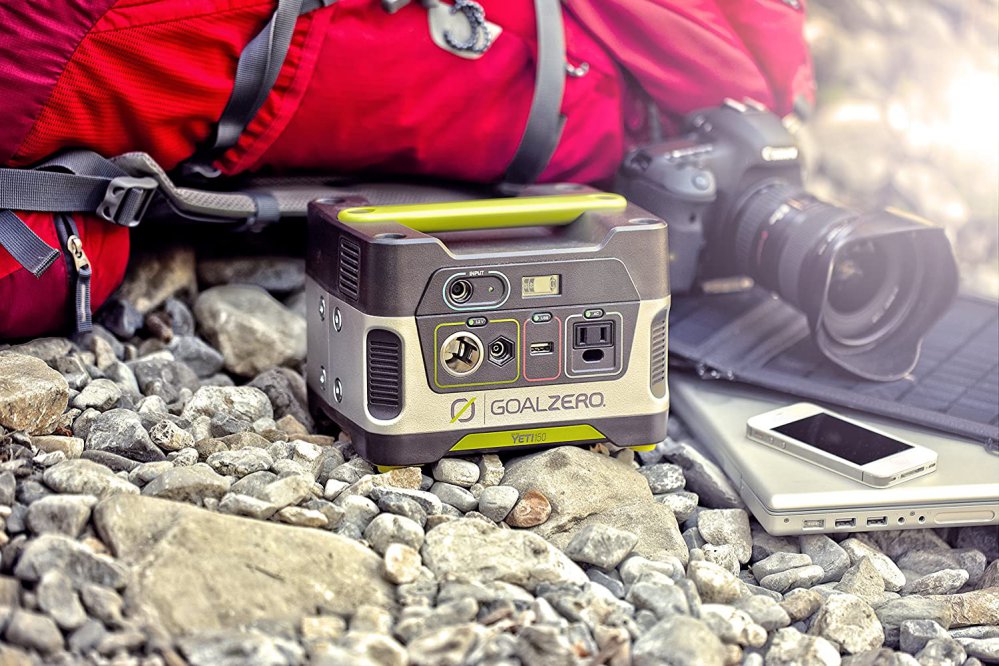
We know that a conventional generator is a device that generates power to supply various loads; here, the electricity you get is generated by the engine, which consumes fossil fuel.
Unlike those generators, solar generators run on solar energy, which is harnessed with the use of solar panels from sunlight. Due to the fact that the generator is totally powered by solar energy, you can stay powered even when you are entirely off-grid.
The solar generator uses a solar panel to capture the sun’s energy and then store it in batteries. The battery will supply power when it is required.
In simplest terms, a solar generator is a device that contains a charge controller, an inverter, and batteries to harness the sun’s power and supply it back whenever needed. It is disconnected from the grid solar system but with the advantage of portability.
Do We Really Need to Call Them Solar Generators?
In general, the solar generator can refer to any energy system in which the main energy source is the sun. But most of the time, when the term solar generators is used, they are referring to portable solar setups because they use solar panels to collect energy from the sun and store it into portable batteries.
To answer this question, Yes, you will need to call them solar generators because most people refer to them by that name. To make sure they understand what you are referring to, you will need to call them by that name. Otherwise, you can call them whatever you like.
How Do Solar Generators Work?
You can consider them as a portable power station that works on energy stored in the battery, accumulated from the sunlight.
The working of these solar generators is simple: the energy of the sunlight is preserved inside a battery, which is harnessed with the help of a solar panel. And when power is needed to be supplied, the inverter converts this DC energy available from the battery into an AC for various appliances.
Moreover, you can recharge the solar generator using the household supply, car battery, or generator with clean power output.
A solar generator mainly consists of a solar panel, a charge controller, a battery, and an inverter. The function of each of them is explained below.
Solar Panel

The main and most important part of solar generators is solar panels. It is the component of the unit which generates usable electricity from the sunlight.
A whole solar panel is made of many small photovoltaic cells, which convert the photons of the sunlight into electricity and store it in a battery.
Solar panels are a little expensive, but they can last from 10 to 20 years. Besides, different panels will have different efficiency ratings, which will determine their capacity to generate electricity. In modern solar generators, they can be directly connected to the unit.
A Solar Charge Controller
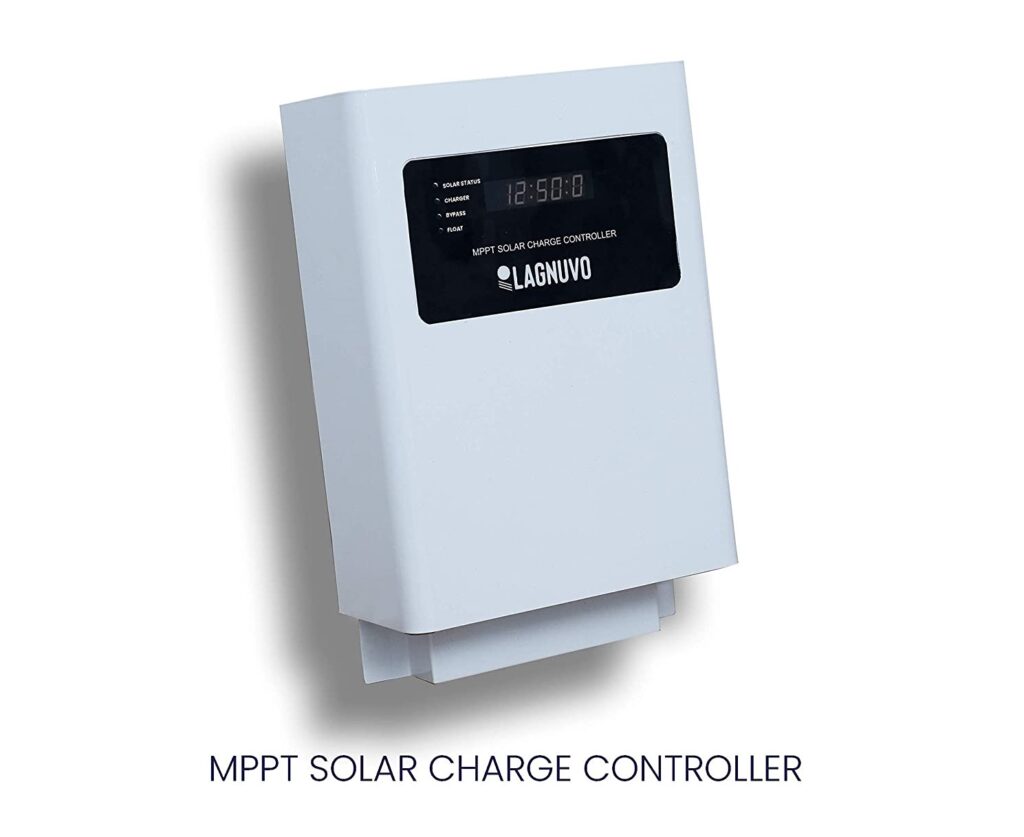
A solar charge controller regulates the voltage and current level supplied to the battery. This regulation is important to keep the batteries from overcharging and to protect them from potential damages due to overvoltage.
Solar panels of 12 volts generate about 16 to 20 volts on a non-cloudy day, while most of the batteries are designed to be charged at 14 to 14.5 volts. This means that without regulation, the batteries are going to be damaged.
Does this mean that to charge the battery of the solar generator, you will need a separate solar charge controller?
No, for smaller panels, you will not need a solar charge controller. On top of that, most of the solar generators come with the in-built charge regulating circuitry/MPPT charge controllers for maximum efficiency, and you can directly connect the solar panel.
Battery
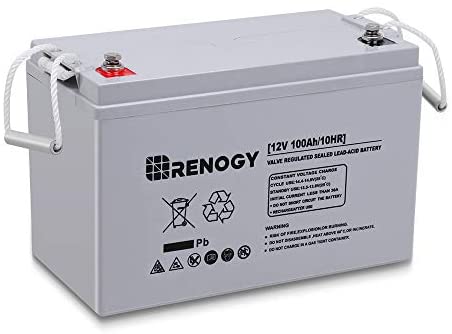
All the gathered energy through a solar panel is stored inside the battery, from where the electricity is taken out to supply the load. The battery storage capacity is the most important factor because it will determine how many electrical appliances and electronic devices can be powered.
There are mainly two types of batteries that can be used in a solar generator, which are lead-acid batteries and Li-ion batteries.
Both of them are deep-cycle batteries. The deep cycle means you can deplete the batteries up to a certain level without affecting their quality and lifespan.
For lead-acid batteries, manufacturers recommend that you only use 50% of its full capacity; if not, then its lifetime will be considerably reduced. While for the Li-ion batteries, you can use them up to 10% of their capacity, and most modern solar generators use Li-ion batteries due to their more energy density and long lifespan.
Inverter
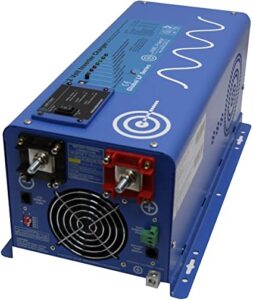
To power most of the appliances in the house from this generator, you need an AC, but the battery supplies the DC only. So, to convert this DC into AC, an inverter is provided.
The main function of this inverter is to convert power from DC to AC to supply the loads. But when charging the solar generator from the wall outlet, you will need to convert the AC power into DC.
Also, the maximum power rating of the solar generator is fixed by the rating of this inverter. This means if the inverter has a maximum rating of 2000 watts, then you can draw the maximum power up to that rating.
Things to Consider Before Buying the Best Solar Generator
Before buying a solar generator, keep these few things in mind so that you can purchase a generator of the right size for your needs.
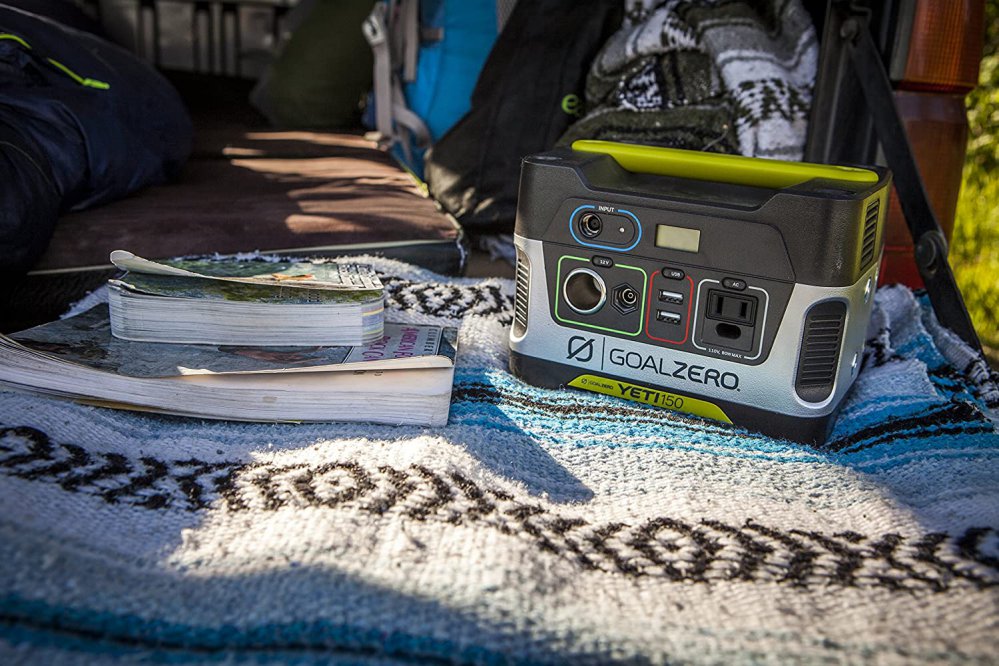
Solar Panels
Solar panels are the only charging method you are going to have when you are off-grid. In the market, various solar panels are available, which are made out of different materials, and they differ from each other in terms of their efficiency to generate usable energy.
Some will generate more power than others, although they are receiving the same amount of sunlight.
The energy generated from the solar panel is measured in watts. The total number of watts that the solar panel can produce each day depends on its daily sun exposure.
Suppose a general rating of the solar panel is 100 watts, and it receives 5 hours of sunlight someday, which means it will produce 500 watts of power on that particular day. That’s why we recommend that you choose the solar panel with the highest efficiency.
Battery Capacity
This is one of the most important considerations when buying a solar generator. Because the capacity of the battery and its maximum power output will determine how many appliances simultaneously you can power with it.
Note that the capacity of the battery and its ability to supply power isn’t the same thing. Suppose one battery has a high capacity, but the inverter’s power rating is less, then this means the battery will deliver power for longer periods but at a lower power rating.
Moreover, some batteries have the ability to recharge and discharge simultaneously. The generator with the batteries can’t be charged simultaneously when using it (known as pass-through charging), then you will need to wait for them to fully charge before using them again.
But you can charge batteries with the trickle charging capability. Also, when you are drawing out the power, you won’t have to wait for hours for them to be recharged.
Inverter Rating
The inverter is that component of the solar generator responsible for converting DC power from the battery to AC, which you get from the AC outlets. The rating of the internal inverter generally decides the maximum amount of power that can be drawn from the generator at any given time.
Also, the rating of an inverter generally denotes the maximum amount of power that it can handle, which is in watts. The rating of the inverter should be the same or higher than the maximum power a generator can generate.
The solar generators come equipped with any of the two inverter types; it can either be a pure sine wave inverter or a modified sine wave inverter.
The pure sine wave inverter is costly but reduces the strain on the appliances like microwaves, televisions, etc. While the modified sine wave generators are less in cost, almost half the price of pure sine wave generators.
Expandability of Power
You can’t predict when and how much extra power you may need in the near future, that’s why it will be extremely convenient if you can increase the energy capacity of your solar generator.
Some models are available in the market, which lets you attach the additional batteries as well as additional solar panels to meet your extended energy demand. But, the expansion will be limited by a solar charge controller that comes with the unit; it won’t be able the handle the power more than it is designed to.
This means you can connect the additional solar panels as long as the charge controller can handle the maximum watts.
Power Requirement
The selection of the generator should be based on the needs of the consumer. Some people only require a portable power station for charging their electronics like mobiles, laptops, cameras, or just to jump-start the batteries of a dying car.
If you fall in this category, you can choose the lightweight and highly portable solar generators which offer an energy storing capacity of 100 to 500 watt-hours.
But, if your power requirement is higher and if you need to power a small fridge or even a heater, then those little fellas can’t do the job. So you have to go for solar generators with bigger capacities like 1500 or 2000 Wh.
What Size Solar Generator Do You Need?
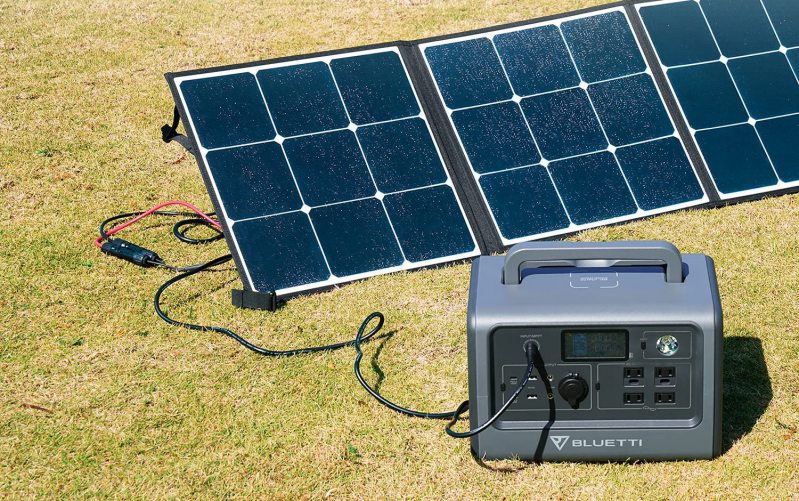
Any appliances have two ratings: continuous watts and surge watts. To choose the right size of solar generator, you will need to consider both of them.
Continuous watts are the power that you will need to supply the appliances for their proper operation after it is started.
On the other hand, surge watts are the power that appliances will need when it is starting. Generally, the surge watt ratings are more than the continuous rating, and it is mainly high for the appliances, which consist of inductive load. But the good thing is surge watts are required only for a few seconds.
So, to power any appliance, the generator should be able to supply the surge watts at the starting and the continuous watts when the appliance is started.
To figure out how many watts of continuous power, the solar generator will need to supply, make a list of the essential devices you would be running through this generator. Then add their watts per hour and multiply it by the total no of hours you are going to use them.
Now take into account a washing machine that requires 1000 watts of power daily but to run it for 2 hours it uses just 84 watts of power. The same goes for other appliances as well.
But if the same washing machine needs 2000 starting watts, and if the generator has a capacity of supplying 1500 watts of surge power, then the generator won’t be able to start the washing machine in the first place.
Most solar generators aren’t capable of running heavy appliances, but they will easily run basic household appliances.
Benefits of Solar-powered Generators
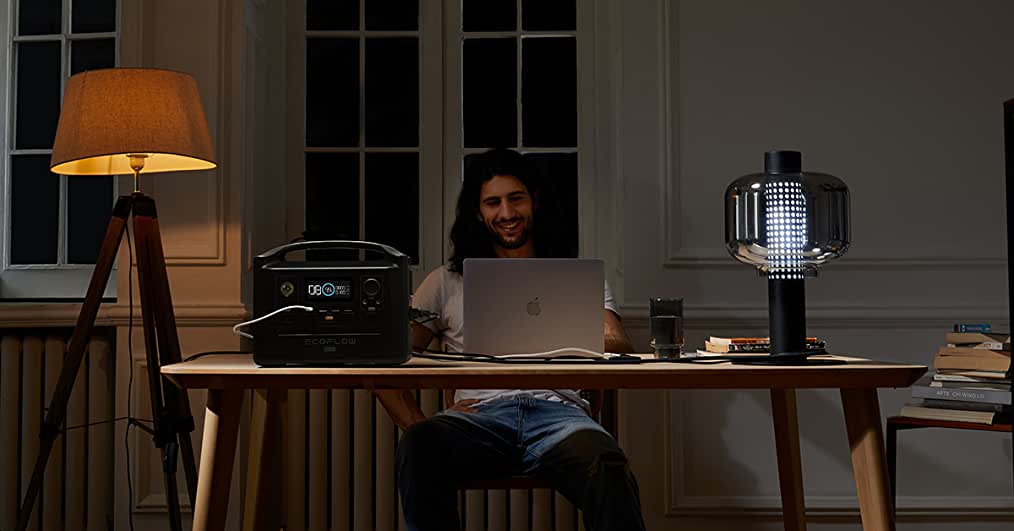
Solar generators have many benefits compared to conventional fossil fuel-powered generators, a few of which we have discussed here.
Portability
This is the most useful advantage of a solar generator. Solar generators are highly portable, and you can carry them with you whenever you want, thanks to their compactness and lightweight.
The reason behind its lightweight is Li-ion batteries, which can store more energy in less space. So it offers more energy while being small in size.
Are you planning a camping trip? Or maybe a tailgating adventure? With access to a solar generator, you won’t have to worry about electricity needs.
It can keep running your radios, lamps, and small speakers and can charge your essential electronics multiple times.
Multiple Power Sources
If the electricity goes out, you won’t be without backup power even if the sun hasn’t come up in a few days because of the rainy weather. The reason being, you can’t just charge it from the sunlight only, it can be charged from the wall outlets as well.
Besides, if you didn’t get the time to charge the generator even at home and you are on the go, then you can also charge it from the CIG port of your car. Maybe that’s why they are called all-in-one portable power stations.
No Maintenance
Unlike other generators, these solar generators will need very low maintenance because you are not pouring any liquid inside them, eliminating the possibility of the development of rust or corrosion of moving parts.
Besides, there is no fuel requirement, which decreases its operating cost to almost zero. There is just a high initial investment, but, in the long run, it is worth it.
Moreover, they also don’t have any moving parts, so you won’t have to disassemble the whole thing only for cleaning. This reduces the chances of anything breaking inside and also makes cleaning easier.
Eco Friendly
The main advantage of the solar generator is the liberation from those toxic and harmful gases. This is because they don’t use any fossil fuels. It runs on solar energy, which is abundantly available every day without any by-product.
This lack of hazardous fumes also makes it possible to use them indoors. Besides, they will reduce your carbon footprint in the environment, reducing the greenhouse effects.
Quiet Operation
The solar generator doesn’t need heavy engines to generate electricity. This means the main source of noise is eliminated from the picture. Moreover, they don’t have any moving parts, which means there will be no noise due to shaking as well.
The one noise you might hear will be the buzzing of an inverter and of small fans, which are there for the cooling, but it will be minimal. Due to its low noise, it is a great choice for outdoor activity.
Portable Power Station FAQs
Why are solar generators so expensive?
Solar generators are expensive because the materials used to fabricate them are expensive. The technology to store the energy inside a small box is not cheap.
However, the price changes with the power output and battery capacity; the smaller generators are obviously going to be less expensive than the bigger ones.
The main reason behind that is the batteries, which don’t come cheap, mainly these new Li-ion batteries.
It means as the power increases, the size of the battery increases. They are not a simple set of AA batteries available in the nearby store; they are highly sophisticated, which requires more bucks.
Can I use my solar generator while it is charging?
Yes, you can use the solar generator when it is charging, but we don’t recommend it, even though modern generators are capable of charging and discharging at the same time.
The reason is that you can’t charge them fast enough. Solar generators charge at a very slow rate when using solar panels. If you burden it further with the load, then it will charge even slower, and the time will come when all the stored energy will be depleted.
Still, if you decide to use it when charging, make sure the device doesn’t require energy more than what is left in the generator.
Can I keep the solar generator plugged in at all times?
Yes, you can. It won’t create any issues if you keep your generator plugged in all the time. Whether you are charging it from a wall outlet or from a solar panel, no damage will be done to any of the components, even if you keep them connected after the battery is fully charged.
This is because the generators are equipped with charge controllers and internal circuitry, which will limit the amount of power delivered to the battery when it is fully charged. Moreover, once the batteries are fully charged, many systems can retain the charge for 3 to 12 months.
How long will a solar generator last?
The running time of a solar generator on a full charge depends on the number of equipment connected and their power requirement. But to calculate the lifespan on a single charge, there is a simple formula, which is to divide the total watt-hours (Wh) of the battery by the electricity usage in watts(W).
Generally, the battery capacity is given in the instruction manual, but calculating the energy usage of multiple appliances gets quite tricky.
If the battery capacity of the solar generator is 2400 Wh and you are using an appliance that has a power rating of 600W, then the generator will be able to run for 4 hours. But when using multiple devices, you will need to take into account the wattage of every single unit.
Besides, it is worth noting that the appliances can be powered when the generator is charging.
Can I use a solar generator indoors?
Solar generators don’t have fossil fuel engines, which means the generator doesn’t emit any toxic fumes. So, you can use it indoors without having to worry about anything.
Also, they operate silently, and there won’t be any noise problems as well. This makes it a suitable choice to power different appliances inside the house, without any cables running around.
Further Reading
Most Quietest Generators in 2024

